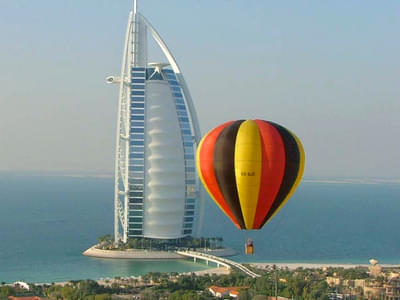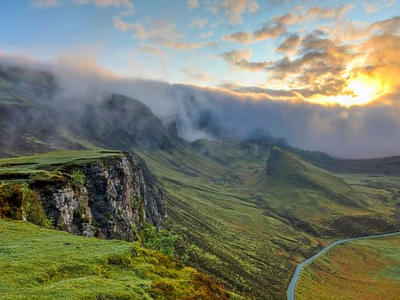Pali
Experiential journeys will make you a storyteller
About Pali
Pali is a city in the state of Rajasthan, harboring on the banks of the river Bandi. With an average elevation of 214 meters and located only seventy kilometers from the city of Jodhpur, it is also famously nicknamed as “The Industrial City.”
Known to be the seat of many historical dynasties including the famous Rajputs, the city’s origins date back to the prehistoric ages, emerging from the Western Sea which covered much of present-day Rajasthan. Shaped like a triangle and bordered by the districts of Nagaur, Jodhpur, Barmer, Rajmasand, Udaipur, Ajmer, Sirohi and Jalore, Pali is undoubtedly the hub of trade and commerce in Rajasthan.
The city was reigned by different rulers across the ages, including the Guhilas of Mewar and the Chauhans, right down to Maharana Pratap, Harshavardhana, Prithviraj Chouhaan and subsequently Sher Shah Suri. Despite the city being mainly known for its trade and commerce, Pali has various forts, temples and dams to show for its rich cultural heritage. The city is also representative of Rajasthan’s rich religious history, predominantly Jain.
The city being under different rulers, has forts and temples of varying architectural styles and artistic designs. The most famous places of attraction in the city include the Ranakpur Jain Temples, the Jawai Dam, the Ranakpur Dam, the Parshuram Mahadev Temple, the Nimbo Ka Nath Temple, the Sun Temple and the Samand Lake. Pali is also famous for its Baoris and ornate step wells.
It is best to avoid visiting Pali during the summer, as like most cities in Rajasthan temperatures during the day can shoot up to 45 degrees. The weather remains fairly moderate during October to March with pleasant nights and days.
Known to be the seat of many historical dynasties including the famous Rajputs, the city’s origins date back to the prehistoric ages, emerging from the Western Sea which covered much of present-day Rajasthan. Shaped like a triangle and bordered by the districts of Nagaur, Jodhpur, Barmer, Rajmasand, Udaipur, Ajmer, Sirohi and Jalore, Pali is undoubtedly the hub of trade and commerce in Rajasthan.
The city was reigned by different rulers across the ages, including the Guhilas of Mewar and the Chauhans, right down to Maharana Pratap, Harshavardhana, Prithviraj Chouhaan and subsequently Sher Shah Suri. Despite the city being mainly known for its trade and commerce, Pali has various forts, temples and dams to show for its rich cultural heritage. The city is also representative of Rajasthan’s rich religious history, predominantly Jain.
The city being under different rulers, has forts and temples of varying architectural styles and artistic designs. The most famous places of attraction in the city include the Ranakpur Jain Temples, the Jawai Dam, the Ranakpur Dam, the Parshuram Mahadev Temple, the Nimbo Ka Nath Temple, the Sun Temple and the Samand Lake. Pali is also famous for its Baoris and ornate step wells.
It is best to avoid visiting Pali during the summer, as like most cities in Rajasthan temperatures during the day can shoot up to 45 degrees. The weather remains fairly moderate during October to March with pleasant nights and days.
Read More
Pali Packages
Pali FAQ's
Which are the best places to see in Pali?
1. Lakhotia Garden: Lakhotia Garden happens to be a famous garden in the city of Pali. The name of the garden is taken from Lakhotia Pond, which surrounds the garden in all three directions giving a feel of the peninsula. The huge garden of Lakhotia offers loads of open areas and green spaces for spending time in relaxation.
The large pond in the premises serves for wonderful viewing in the course of the daylight hours. There is a Shiva Temple at the centre of the garden that is dedicated to the Neelakantha Avatar of almighty. Tourists love to capture snaps of the beautiful facade of the temple because of its intricate engravings.
Location: Lakhotiya Rd, near Lakhotiya tank, Sindhi Colony, Pali, Rajasthan 306401.
Timings: 10 AM to 5 PM.
2. Parshuram Mahadev Temple: Parshuram Mahadev Temple in Pali is a place of worship that is dedicated to the sixth incarnation of Lord Vishnu, Parshuram. Situated amongst the Aravalli mountain ranges, this temple served as a place of meditation for the axe wielding god.
In order to visit this temple, you would need to walk for a bit through the alluring and appeasing path that is filled with a number of water filled kunds and vibrant flora all over. Visiting this place can be considered as an adventure in itself and people hungry for adventure in their life are most welcome.
Location: Kabir Nagar, Jodhpur, Rajasthan 342001.
Timings: Open 24 hours.
3. Bangur Museum: Bangur Museum is a little museum in Pali that is home to some of the unparalleled collections of the age old times. You will come across a wide range of coins, armours, paintings, tribal handicrafts, and house tools that date back to the Palaeolithic period.
The exhibition hall has also got an opulent collection of paintings and arms that talk a lot about the culture of Rajasthan. The museum has got a number of interesting coinage on display that are related to some of the great rulers of the bygone times like Tughlak, khilji and many others.
Location: Nehru Nagar, Mahaveer Nagar, Pali, Rajasthan 306401.
4. Jawai Dam: Jawai Dam was built over the Jawai River 70 years ago and it happens to be one of the biggest dams in the Indian State of Rajasthan. The dam serves as a lifetime to a number of nearby villages. The overall look of the dam is very scenic and quaint because of the presence of mountains in the backdrop.
Tourists love to come over to this place to spend some time in solitude far away from the hustle bustle of the regular city life. This place also serves as a home to a number of migratory birds from various parts of the world during the migration season. You would in general get to see Cranes, geese, bears, and hyenas at the dam.
Location: Pali district, Rajasthan.
5. Om Banna: Om Banna is no ordinary temple in Pali but it is rather very much special and unique. Entering into the temple you will not find any deity but you will find a Royal Enfield Bike that is encased in a glass and a shrine with a photo of an ordinary man, Om Banna.
As per the local belief, Om Banna’s soul protects the common people from accidents in the accident prone highway of Pali. People visit this temple and offer flower garland, seek blessings and pray to protect them from any mishappening on the road. Being only one such temple in the whole world, you should visit this for sure to learn more about the legendary Banna.
Location: Opp Rajputana Hotel, National Highway 62, Om Banna, Rajasthan 306421.
Timings: 5 AM to 10 PM.
The large pond in the premises serves for wonderful viewing in the course of the daylight hours. There is a Shiva Temple at the centre of the garden that is dedicated to the Neelakantha Avatar of almighty. Tourists love to capture snaps of the beautiful facade of the temple because of its intricate engravings.
Location: Lakhotiya Rd, near Lakhotiya tank, Sindhi Colony, Pali, Rajasthan 306401.
Timings: 10 AM to 5 PM.
2. Parshuram Mahadev Temple: Parshuram Mahadev Temple in Pali is a place of worship that is dedicated to the sixth incarnation of Lord Vishnu, Parshuram. Situated amongst the Aravalli mountain ranges, this temple served as a place of meditation for the axe wielding god.
In order to visit this temple, you would need to walk for a bit through the alluring and appeasing path that is filled with a number of water filled kunds and vibrant flora all over. Visiting this place can be considered as an adventure in itself and people hungry for adventure in their life are most welcome.
Location: Kabir Nagar, Jodhpur, Rajasthan 342001.
Timings: Open 24 hours.
3. Bangur Museum: Bangur Museum is a little museum in Pali that is home to some of the unparalleled collections of the age old times. You will come across a wide range of coins, armours, paintings, tribal handicrafts, and house tools that date back to the Palaeolithic period.
The exhibition hall has also got an opulent collection of paintings and arms that talk a lot about the culture of Rajasthan. The museum has got a number of interesting coinage on display that are related to some of the great rulers of the bygone times like Tughlak, khilji and many others.
Location: Nehru Nagar, Mahaveer Nagar, Pali, Rajasthan 306401.
4. Jawai Dam: Jawai Dam was built over the Jawai River 70 years ago and it happens to be one of the biggest dams in the Indian State of Rajasthan. The dam serves as a lifetime to a number of nearby villages. The overall look of the dam is very scenic and quaint because of the presence of mountains in the backdrop.
Tourists love to come over to this place to spend some time in solitude far away from the hustle bustle of the regular city life. This place also serves as a home to a number of migratory birds from various parts of the world during the migration season. You would in general get to see Cranes, geese, bears, and hyenas at the dam.
Location: Pali district, Rajasthan.
5. Om Banna: Om Banna is no ordinary temple in Pali but it is rather very much special and unique. Entering into the temple you will not find any deity but you will find a Royal Enfield Bike that is encased in a glass and a shrine with a photo of an ordinary man, Om Banna.
As per the local belief, Om Banna’s soul protects the common people from accidents in the accident prone highway of Pali. People visit this temple and offer flower garland, seek blessings and pray to protect them from any mishappening on the road. Being only one such temple in the whole world, you should visit this for sure to learn more about the legendary Banna.
Location: Opp Rajputana Hotel, National Highway 62, Om Banna, Rajasthan 306421.
Timings: 5 AM to 10 PM.
What are the best things to do in Pali?
1. Visit Chandelao: A visit to the settlement of Chandelao happens to be a wonderful place that is located at a distance of 65 km from Pali. The best thing about this place is its houses that are constructed using traditional mud bricks.
Coming over to this place, you will get a chance to learn more about the local tradition and culture of Rajasthan. You will get a chance to shop local crafts made by local artisans which are colorful and pose to be wonderful home decor equipment.
Location: Village & Post Office Chandelao, SH 58, Chandelao, Rajasthan 342027.
2. Authentic Dining Experience: During your visit to Pali, you can head out to some of the best restaurants to relish delectable Rajasthani Food along with your loved ones.
Taking this tour with your loved ones, you will be able to learn more about the culture of Rajasthan and make some new friends. In this dining experience, you will be served farm fresh products that are prepared by master chefs as per the traditional way of cooking.
Location: Rajashan.
3. Relax at the Lakhotia Gardens: Lakhotia Garden is one of the best places in the city of Pali to relax and rejuvenate amid natural surroundings. The garden is spread over a large area that is packed with lush greenery all around and a pleasant waterbody to delight your senses. You can come over to this with your loved ones to enjoy the serenity of this place that has got its root in the history of India.
Location: Lakhotiya Rd, near Lakhotiya tank, Sindhi Colony, Pali, Rajasthan 306401.
Timings: 5 AM to 10 PM.
4. Offer prayer at the Nimbo ka Nath Mahadev Temple: Located in the district of Pali, Rajasthan, Nimbo ka Nath Mahadev Temple is dedicated to Lord Shiva and is visited by zillions of devotees all through the year.
The temple happens to be the centre of great faith and as per the Hindu mythology, this is the place where Kunti, mother of the Pandavas worshipped Lord Shiva in the course of their exile. The best part of this place is its surrounding area that is truly mesmerizing. This place is also very much popular among nature lovers and photographers.
Location: Pali, Rajasthan 306401.
Coming over to this place, you will get a chance to learn more about the local tradition and culture of Rajasthan. You will get a chance to shop local crafts made by local artisans which are colorful and pose to be wonderful home decor equipment.
Location: Village & Post Office Chandelao, SH 58, Chandelao, Rajasthan 342027.
2. Authentic Dining Experience: During your visit to Pali, you can head out to some of the best restaurants to relish delectable Rajasthani Food along with your loved ones.
Taking this tour with your loved ones, you will be able to learn more about the culture of Rajasthan and make some new friends. In this dining experience, you will be served farm fresh products that are prepared by master chefs as per the traditional way of cooking.
Location: Rajashan.
3. Relax at the Lakhotia Gardens: Lakhotia Garden is one of the best places in the city of Pali to relax and rejuvenate amid natural surroundings. The garden is spread over a large area that is packed with lush greenery all around and a pleasant waterbody to delight your senses. You can come over to this with your loved ones to enjoy the serenity of this place that has got its root in the history of India.
Location: Lakhotiya Rd, near Lakhotiya tank, Sindhi Colony, Pali, Rajasthan 306401.
Timings: 5 AM to 10 PM.
4. Offer prayer at the Nimbo ka Nath Mahadev Temple: Located in the district of Pali, Rajasthan, Nimbo ka Nath Mahadev Temple is dedicated to Lord Shiva and is visited by zillions of devotees all through the year.
The temple happens to be the centre of great faith and as per the Hindu mythology, this is the place where Kunti, mother of the Pandavas worshipped Lord Shiva in the course of their exile. The best part of this place is its surrounding area that is truly mesmerizing. This place is also very much popular among nature lovers and photographers.
Location: Pali, Rajasthan 306401.
When is the best time to visit Pali?
The best time to visit Pali would be in the winter season when the temperature remains favourable for sightseeing. You can visit Pali from the month of October to month of April to enjoy all the best things that this place has to offer.
How to reach Pali?
- By Flight: The nearest airport from Pali is in Jodhpur that is roughly about one and half hours drive. The city is well connected with the airport and you can easily fly from Delhi, Mumbai, Udaipur, and many other locations through Air India and Jet Airways.
- By Train: Pali has got its very own railway station, Pali Railway Station that is connected with all major cities of Rajasthan as well as many other Indian cities like Guwahati, Ajmer, Jaipur, Bangalore, Yeshwantpur, Ranakpur, Bikaner, Jodhpur and Mysore.
- By Road: Pali has got wonderful road connectivity to all nearby major cities like Luni, Jodhpur, Samdari, Beawar, Ajmer, Udaipur, Jaipur, Bikaner, and Kota. The Rajasthan State Road Transport offers timely services to Pali through its day and night service coaches.
- By Train: Pali has got its very own railway station, Pali Railway Station that is connected with all major cities of Rajasthan as well as many other Indian cities like Guwahati, Ajmer, Jaipur, Bangalore, Yeshwantpur, Ranakpur, Bikaner, Jodhpur and Mysore.
- By Road: Pali has got wonderful road connectivity to all nearby major cities like Luni, Jodhpur, Samdari, Beawar, Ajmer, Udaipur, Jaipur, Bikaner, and Kota. The Rajasthan State Road Transport offers timely services to Pali through its day and night service coaches.
Is Pali worth visiting?
Pali is definitely worth visiting in the course of your visit to Rajasthan. Pali is very much popular for its offbeat and adventure experiences among the thrill seekers.
You can visit this place to indulge in various leopard safari trails. Apart from the adventure point of view, this place is very much famous for its historical monuments and heritage sites.
You can visit this place to indulge in various leopard safari trails. Apart from the adventure point of view, this place is very much famous for its historical monuments and heritage sites.
What is famous in Pali?
Pali is very much popular for its heritage sites like Maharana Pratap Smarak and Lakhotia Garden, historical buildings like Hemawas Dam and Manpura Bhakri, exhibition halls like Bangur Musuem places of worship like Shir Navlakha Parshwanath Jain Temples and Somnath Mandir, and wonderful ecotourism hubs. This place is also known for its wildlife sightings and safari tours.
What are the best public transport modes to commute around Pali?
The best public transport modes to commute around Pali would be by the local state run city buses and rental cabs. They offer timely service at the most affordable rates to suit your pocket.
What are the best resorts in Pali?
1. WelcomHeritage Maharani Bagh Orchard: WelcomHeritage Maharani Bagh Orchard happens to be a wonderful resort in Pali that is known for its wonderful architectural designs and a superb natural ambience. With all sorts of modern amenities and facilities, this property is one of the most sought after resorts in Pali, Rajasthan.
2. Lakshman Sagar: With 12 beautifully designed cottages in a semi circle arrangement around a pristine lake, Lakshman Sagar happens to be a prime property in Pali to spend your holiday vacation along with your loved ones.
3. Castle Bera Hotel: If you wish to relish a personalised touch in everything in the course of your stay in Pali, then there is no better place than Castle Bera Hotel. You will surely be able to get the most satisfying experience as the owners will treat you as their personal guest.
4. Rohetgarh: It is one of the top ranked properties in Pali because of its long list of offerings and well curated services. Staying at this place, you can head out for various sightseeing tours and indulge in a number of adventure activities.
2. Lakshman Sagar: With 12 beautifully designed cottages in a semi circle arrangement around a pristine lake, Lakshman Sagar happens to be a prime property in Pali to spend your holiday vacation along with your loved ones.
3. Castle Bera Hotel: If you wish to relish a personalised touch in everything in the course of your stay in Pali, then there is no better place than Castle Bera Hotel. You will surely be able to get the most satisfying experience as the owners will treat you as their personal guest.
4. Rohetgarh: It is one of the top ranked properties in Pali because of its long list of offerings and well curated services. Staying at this place, you can head out for various sightseeing tours and indulge in a number of adventure activities.
Which are the historical places in Pali?
1. Ranakpur Jain Temples: Ranakpur Jain Temples date back to the 15th century and are dedicated to Adinath, a very important figure in Jain Cosmology. It is named after the provincial monarch of Rana Kumbha.
2. Jawai Dam: Jawai Dam is constructed by Maharaja Umaid Singh of Jodhpur over River Lumi. This happens to be the biggest dam of Rajasthan and is a primary source of water for a number of nearby villages and settlements. This place is considered to be winter paradise because of the migratory birds, house crocodiles, and leopards.
3. Parshuram Mahadev Temple: Cave temple of Parshuram Mahadev Temple is believed to have been crafted by Parashuram, an avatar of Lord Vishnu by his axe. Parshuram Mahadev Temple is located at 3990 feet above sea level housing the naturally made figures of Lord Ganesha and Lord Shiva.
4. Nimbo Ka Nath Temple: Situated on the Falna Sanderav route, this temple is dedicated to Lord Shiva. As per legends, this is the place where Kunti, mother of Pandavas worshipped Mahadev here and the Pandavas had also built a Navdurga.
2. Jawai Dam: Jawai Dam is constructed by Maharaja Umaid Singh of Jodhpur over River Lumi. This happens to be the biggest dam of Rajasthan and is a primary source of water for a number of nearby villages and settlements. This place is considered to be winter paradise because of the migratory birds, house crocodiles, and leopards.
3. Parshuram Mahadev Temple: Cave temple of Parshuram Mahadev Temple is believed to have been crafted by Parashuram, an avatar of Lord Vishnu by his axe. Parshuram Mahadev Temple is located at 3990 feet above sea level housing the naturally made figures of Lord Ganesha and Lord Shiva.
4. Nimbo Ka Nath Temple: Situated on the Falna Sanderav route, this temple is dedicated to Lord Shiva. As per legends, this is the place where Kunti, mother of Pandavas worshipped Mahadev here and the Pandavas had also built a Navdurga.
Newly Added Pali Experiences
Pali Reviews

Niro Mukhopadhyay
Reviewed: 13 Dec 2018
5.0/5
Booked:Boutique Stay in Rajasthan near Jawai Sagar Dam
I brought my office team here for our yearly corporate outing and everyone just loved the experience. Even though we were a large group of 18, they handled the booking pretty well, and saved me all of the trouble. The place itself was beautiful, with a nice lake just around the corner, and our caret... Read More

Dayaamay Nayar
Reviewed: 08 Dec 2018
5.0/5
Booked:Boutique Stay in Rajasthan near Jawai Sagar Dam
We skipped the mundane and decided to stay here. This boutique resort was very tempting also because of its location which faces the Jawai lake. Good stay!

Aatmaj Naik
Reviewed: 08 Dec 2018
5.0/5
Booked:Boutique Stay in Rajasthan near Jawai Sagar Dam
Simply no words to describe the beauty of this place. The rooms were beyond our expectations, and Raju, the host, ensured that we had everything we needed on our stay.

Bhavani Varman
Reviewed: 08 Dec 2018
4.0/5
Booked:Boutique Stay in Rajasthan near Jawai Sagar Dam
Stayed here on a two days one-night package deal and cannot stop writing this review. Our balcony had a clear view of the Jawai lake and it was one memorable stay in Rajasthan. Would rate more than full.

Mahendra Gandhi
Reviewed: 08 Dec 2018
4.0/5
Booked:Boutique Stay in Rajasthan near Jawai Sagar Dam
Staying here on our trip to Sena was a nice experience. The rooms were nice and meals were included in the package. But the best part was the awesome views of the lake from the verandah. We were five of us on the trip and it proved to be very cost effective booking withThrillophilia.

Deeksha Chattopadhyay
Reviewed: 08 Dec 2018
4.0/5
Booked:Boutique Stay in Rajasthan near Jawai Sagar Dam
Trust me when I say that this is one of the best places I have visited in my life. Everything about this place screams of luxury and comfort, and the views are incredible. We especially loved our jeep safari adventure and the delicious three meals that were provided as a part of the package.
Popular Pali Attractions
Why Choose Thrillophilia
Pali Travel Guides
Best Domestic Packages
Ladakh Tour PackagesHimachal Tour PackagesKashmir Tour PackagesRajasthan Tour PackagesAndaman Tour PackagesUttarakhand Tour PackagesGoa Tour PackagesSpiti Valley Tour PackagesNorth India Tour PackagesSouth India Tour PackagesNorth East Tour PackagesIndia Tour PackagesDelhi Tour PackagesOoty Tour PackagesGangtok Tour PackagesChikmagalur Tour PackagesSikkim Tour PackagesShimla Tour PackagesManali Tour PackagesRishikesh Tour PackagesMeghalaya Tour PackagesJim Corbett Tour PackagesMussoorie Tour PackagesArunachal Tour PackagesKerala Houseboat PackagesDarjeeling Tour PackagesLeh Ladakh Bike Trip PackagesAuli Tour PackagesNainital Tour PackagesKedarnath Tour PackagesCharDham Yatra PackagesDharamshala Tour PackagesWayanad Tour PackagesKerala Tour PackagesJaipur Tour PackagesJodhpur Tour PackagesUdaipur Tour PackagesGolden Triangle Tour PackagesMount Abu Tour PackagesRanthambore Tour PackageCordelia Cruise PackagesMunnar Tour PackagesCoorg Tour PackagesShillong Tour PackagesMahabaleshwar Tour PackagesOoty Tour PackagesKarnataka Tour PackagesSrinagar Tour PackagesDehradun Tour PackagesLonavala Tour Packages
Best International Packages
Maldives PackageBali Tour PackagesDubai Tour PackagesEurope Tour PackagesSwitzerland Tour PackagesSingapore Tour PackagesThailand Tour PackagesBhutan Tour PackagesSri Lanka Tour PackagesMauritius Tour PackagesSeychelles Tour PackagesBangkok Tour PackagesPattaya Tour PackagesGreece Tour PackagesParis Tour PackagesLondon Tour PackagesPhuket Tour PackagesNorway Northern Lights TourFinland Tour PackagesAmsterdam Tour PackagesItaly Tour PackagesIceland Tour PackagesTurkey Tour PackagesNorway Tour PackagesSpain Tour PackagesGermany Tour PackagesIstanbul Tour PackagesNepal Tour PackagesMalaysia Tour PackagesVietnam Tour PackagesAustralia Tour PackagesSouth Africa Tour PackagesJapan Tour PackagesEgypt Tour PackagesPhilippines Tour PackagesHong Kong Tour PackagesIreland Tour PackagesAfrica Tour PackagesRussia Tour PackagesKenya Tour PackagesPrague Tour PackagesMasai Mara PackagesAntarctica Tour PackagesNew Zealand Tour PackagesSweden Northern Lights PackagesDenmark Tour PackagesIsrael Tour PackagesCambodia Tour PackagesJordan Tour PackagesTanzania Tour PackagesSantorini Tour PackagesAustria Tour PackagesCroatia Tour Packages




.jpg?w=340&dpr=2)















.JPG?w=140)
.png?w=340&dpr=2)









